Akita and more
- Sort by
- Popularity
- Name
-
Yuki tsumugi silk Yuki tsumugi
- Woven textiles
- Ibaraki

Yuki tsumugi silk is produced principally in the reaches of the Kinugawa River that straddles the Ibaraki and Tochigi prefectures. The Japanese name Yuki tsumugi comes from the name of a feudal lord during the Kamakura period (1185-1333), Yuki. Al…
View more
-
Kasama ware Kasama yaki
- Ceramic
- Ibaraki

Kasama ware (called Kasami yaki in Japanese) is a form of porcelain produced in the area around the city of Kasama in Ibaraki prefecture. This porcelain has long been considered a traditional souvenir of visiting Kasama Inari shrine (one of Japan&…
View more
-
Ojiya chijimi textiles Ojiya chijimi
- Woven textiles
- Niigata

Ojiya chijimi textiles (called Ojiya chijimi in Japanese) is a handicraft produced from ramie in the area around the city of Ojiya in Niigata prefecture. Ramie is a tall plant of the nettle family that has been used to make cloth for centuries. R…
View more
-
Kaba cherrybark woodcrafts Kaba zaiku
- Wood, bamboo crafts
- Akita

Kaba cherrybark woodcrafts (called Kaba zaiku in Japanese) are a type of wood bark craft produced in the former town of Kakunodate, Akita prefecture. While the character for kaba means birch, for this context the word refers to the bark of wild ch…
View more
-
Odate bentwood Odate mage wappa
- Wood, bamboo crafts
- Akita

Odate mage-wappa is a bentwood craft produced all over the city of Odate, Akita prefecture. This craft is well-known both domestically and abroad for having a beautiful curved shape and being lightweight. The key feature of Odate bentwood is the b…
View more
-
Kawatsura lacquerware Kawatsura shikki
- Lacquerware
- Akita

Kawatsura lacquerware (called Kawatsura shikki in Japanese) is produced in the town of Kawatsura in the southern part of Akita prefecture. Everyday use items like bowls and trays have been produced here for a long time. Kawatsura lacquerware has e…
View more
-
Marugame uchiwa fans Marugame uchiwa
- Other crafts
- Kagawa

Marugame uchiwa are a type of fan made in the area around the city of Marugame, Kagawa prefecture. It is believed that, in the early Edo period (1603-1868), the first Marugame uchiwa were made as souvenirs for pilgrims to the Konpira Shrine. The o…
View more
-
Kagawa lacquerware Kagawa shikki
- Lacquerware
- Kagawa

Kagawa lacquerware (called Kagawa shikki in Japanese) is produced in the area around the city of Takamatsu, Kagawa prefecture. There is a wide range of products, such as cake boxes, trays, low tables, and display cases, which are widely popular fo…
View more
-
Shiozawa tsumugi silk Shiozawa tsumugi
- Woven textiles
- Niigata

Shiozawa tsumugi is a silk textile produced in the former town of Shiozawa (now a part of the city of Minamiuonuma), Niigata prefecture. The area is known for its heavy snowfall and wet winter climate which are ideal for weaving. Echigo jofu, a fa…
View more
-
Hon-shiozawa silk Hon shiozawa
- Woven textiles
- Niigata

Hon-shiozawa is a textile produced in the former town of Shiozawa (now a part of the city of Minamiuonuma), Niigata prefecture. It is one of the textiles that represent the region, which is famous for linen and silk textile production. This craft …
View more
-
Ojiya tsumugi silk Ojiya tsumugi
- Woven textiles
- Niigata

Ojiya tsumugi is a silk fabric produced in the area around Ojiya, Niigata prefecture, which is a city known for heavy snow. Echigo jofu, a textile made of ramie, has been produced in this area for over a thousand years. As new weaving techniques …
View more
-
Niigata lacquerware Niigata shikki
- Lacquerware
- Niigata

Niigata Lacquerware (called Niigata Shikki in Japanese) is a form of lacquerware produced in the area around the city of Niigata, Niigata prefecture. This craft has various coating techniques such as hana-nuri, ishime-nuri, nishiki-nuri, isokusa-n…
View more
-
Kamo traditional chest Kamo kiri tansu
- Wood, bamboo crafts
- Niigata

Kamo Kiri Tansu are chests of drawers made of paulownia wood that are produced in and around the city of Kamo, Niigata prefecture. Today, a majority of all paulownia chests made in Japan are produced in Kamo. This craft can keep clothes safe from …
View more
-
Murakami carved lacquerware Murakami kibori tsuishu
- Lacquerware
- Niigata

Murakami Carved Lacquerware (called Murakami Kibori Tsuishu in Japanese) is produced in the area around Murakami, Niigata prefecture. The region, which was formerly the Murakami domain, has been famous for its production of natural lacquer since t…
View more
-
Nibutani carved wooden tray Nibutani ita
- Wood, bamboo crafts
- Hokkaido

Nibutani Carved Wooden Trays (called Nibutani ita in Japanese) are produced in Biratori, Hokkaido. The origin of the town name, is an Ainu language word for cliff, pirauturu. This craft is known for its patterns like a spiral pattern called moreun…
View more
-
Tsubame-tsuiki copperware Tsubame tsuiki doki
- Metal works
- Niigata

Tsubame-tsuiki Copperware (called Tsubame Tsuiki Douki in Japanese) is a type of metalware made on the outskirts of Tsubame, Niigata prefecture. Since the middle of the Edo period (1603-1868), kettles and other crafts have been produced from coppe…
View more
-
Nibutani bark cloth Nibutani attoushi
- Woven textiles
- Hokkaido

Nibutani Bark Cloth (called Nibutani-attushi in Japanese) is a bark fiber fabric produced in the region surrounding the the town of Biratori, Hokkaido. The term Nibutani originates from niputai which is an Ainu (indigenous people of north Japan) l…
View more
-
Akita cedar tubs and barrels Akita sugi oke taru
- Wood, bamboo crafts
- Akita

Akita-sugi Oke Taru are handmade Akita cedar tubs and barrels produced from locally grown cedar timber in the cities of Odate and Noshiro of Akita Prefecture since around the late Heian period (11th century). Products made of straight grain wood w…
View more
-
Echigo-sanjo cutlery Echigo sanjo uchihamono
- Metal works
- Niigata
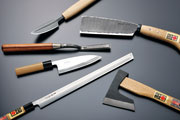
Echigo-Sanjo Uchihamono are hammer-forged blades produced in Sanjo City, Niigata prefecture. Unlike modern blades made using the stamp pressing and polishing techniques developed after the second world war, these blades are produced by hand-hammer…
View more
-
Tokamachi traditional resist-dyed textiles Tokamachi gasuri
- Woven textiles
- Niigata
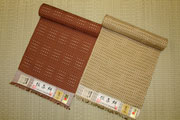
Tokamachi Gasuri is a fabric produced in Tokamachi City and around Tsunanmachi in Nakauonuma, Niigata Prefecture. This area has heavy snow in the winter and is in a basin, so the climate and geographical features are all suitable for fabric produc…
View more
-
Makabe stone lanterns Makabe ishidoro
- Stonework
- Ibaraki

Makabe Ishitoro is the Japanese name for Makabe stone lanterns produced around the town of Makabe in the Ibaraki Prefecture. Production of this traditional craftwork started during the Kamakura period (1185-1333). The stone industry in the Makabe …
View more
-
Nagaoka Buddhist altar Nagaoka butsudan
- Household Buddhist altars
- Niigata
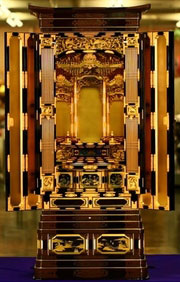
Nagaoka Butsudan are Buddhist altars and altar fittings produced in and around Nagaoka City, Niigata Prefecture. Using traditional techniques that were developed in the 17th century, they are also actively producing innovative designs that suit a …
View more
-
Tokamachi akashi chijimi textiles Tokamachi akashi chijimi
- Woven textiles
- Niigata
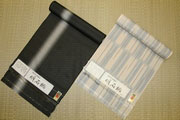
Tokamachi Akashi Chijimi is a textile produced in the area surrounding Tokamachi City in Niigata Prefecture. This is a very delicate and thin textile that requires the high-level techniques and precision of experienced craftsmen. An experimental t…
View more
-
Echigo-yoita cutlery Echigo yoita uchihamono
- Metal works
- Niigata
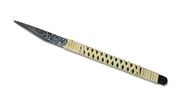
Echigo Yoita Uchihamono are blades produced for a variety of tools in the Yoita area of Nagaoka City, Niigata Prefecture. They are smith forged, meaning red-hot metal is beaten to shape, and are distinguished by their refined sharp cutting edge an…
View more
-
Sanjo Buddhist altar Sanjo butsudan
- Household Buddhist altars
- Niigata
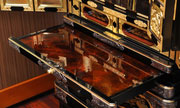
Sanjo Butsudan are Buddhist altars made in the Sanjo area, Niigata prefecture. They are golden altars with well-established characteristics of elegance and dignity. Sanjo Butsudan is characterized by the orthodox design of an inner sanctuary, qual…
View more
-
Niigata-shirone Buddhist altar Niigata shirone butsudan
- Household Buddhist altars
- Niigata
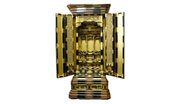
Niigata Shirone Butsudan are Buddhist altars which are mainly made in Niigata city, Niigata prefecture. Japanese cypress, zelkova, Japanese cherry, Japanese white pine and pine are usually used for the altar base. Niigata Shirone Butsudan is chara…
View more
- 1































































































































































































































































































